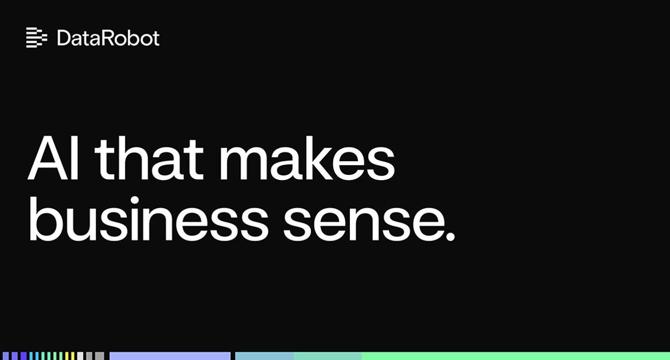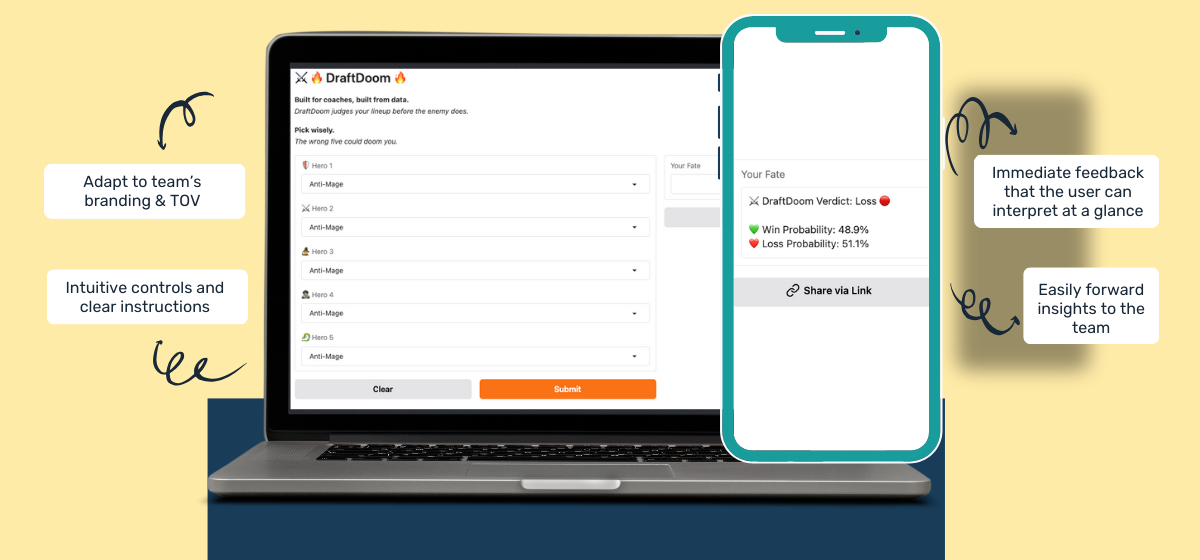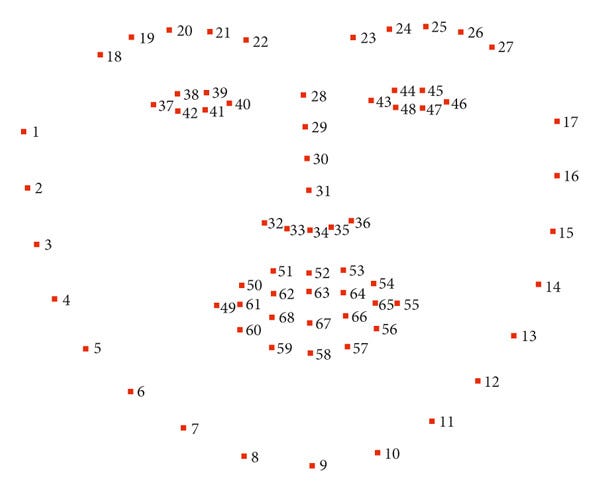Data Science News
VentureBeat
105

Image Credit: VentureBeat
Report: OpenAI is buying AI-powered developer platform Windsurf — what happens to its support for rival LLMs?
- OpenAI is set to acquire AI-powered developer platform Windsurf for $3 billion, aimed at enhancing AI-driven coding assistants competition.
- Windsurf, previously known as Exafunction, was founded in 2021 and has gained over 800,000 developer users and 1,000 enterprises as customers.
- Windsurf offers flexibility in selecting large language models (LLMs) for code writing, including OpenAI's GPT-4o and Anthropic's Claude 3.5 Sonnet.
- Concerns arise on whether OpenAI will restrict users to its model families post-acquisition, potentially impacting Windsurf's user base and developer community.
Read Full Article
6 Likes
Medium
330
Image Credit: Medium
The Biggest Problem with Machine Learning Models that No One is Talking About and How to Fix It…
- Machine Learning Models (MLMs) have limitations such as hallucinations, fake alignment, and open-ended outputs, making them unsuitable for many real-world scenarios.
- Classical ML models also face challenges not widely addressed by ML practitioners, impacting their applicability in diverse scenarios.
- The problem of making predictions in real estate markets like Pima County, Arizona, highlights issues in model outputs based on the neighborhood's characteristics and sales history.
- Interpolation and extrapolation play vital roles in determining the reliability of ML model predictions based on the similarity to training data observations.
- Lack of attention to interpolative versus extrapolative predictions is a prevalent issue in AI projects, posing risks in modeling outcomes and decision-making.
- Zillow's venture into iBuying with Zestimate-led house valuations faced challenges due to inaccuracies in predicting property values, leading to substantial financial losses.
- Bayesian Machine Learning introduces a probabilistic approach that considers uncertainties in model predictions by incorporating variance to indicate confidence levels.
- Bayesian methodologies offer a solution to identify high-variance predictions and filter out unreliable estimations, enhancing decision-making processes in automated evaluations.
- Incorporating Bayesian techniques, like Zillow updating Zestimate to provide a range of possible sale prices, showcases the benefits of leveraging probabilistic models in real-world applications.
- Recognizing the importance of distinguishing between interpolative and extrapolative predictions is crucial for improving the reliability and accuracy of ML models in various domains.
- Further discussions on Bayesian versus frequentist ML models will be explored in Part 2 of the article series, emphasizing the advantages and drawbacks of each approach.
Read Full Article
19 Likes
Analyticsindiamag
426

Oracle and Andhra Pradesh Government to Train 400,000 Students in AI, Cloud and Data Science
- Oracle has partnered with the Andhra Pradesh State Skill Development Corporation to provide skills development training in AI, Cloud, and Data Science to 400,000 students.
- The initiative will offer free, structured digital training through Oracle MyLearn, covering over 300 hours of content including Oracle Cloud Infrastructure, AI services, Data Science, APEX, DevOps, and Security.
- The collaboration aims to enhance employability and equip students for technology-driven careers, with a focus on creating a highly skilled IT workforce in Andhra Pradesh.
- Students will have access to tailored learning paths, certifications, and digital badges to showcase their job readiness, contributing to Oracle's mission of empowering youth with future-ready skills in India.
Read Full Article
25 Likes
Medium
238

Image Credit: Medium
GPT-4.5 Orion: The Game-Changing AI Developers and Businesses Can’t Ignore
- OpenAI released GPT-4.5 'Orion' on February 27, 2025, with enhanced reasoning and accuracy, but at a high price of $75/1M input tokens and $150/1M output tokens.
- GPT-4 will be replaced by GPT-4.5 or GPT-4o by April 30, 2025, based on cost and performance considerations for users.
- GPT-4.5 'Orion' is OpenAI's latest and most advanced model before an expected GPT-5 release and emphasizes scale, reasoning, and accuracy.
- Featuring potentially 4-5 trillion parameters, GPT-4.5 showcases significant improvements in reasoning capabilities and factual accuracy.
- The pricing structure for GPT-4.5 is notably higher, sparking debates in the developer community regarding cost and OpenAI's competitive advantage.
- Developers and businesses face decisions between GPT-4o and GPT-4.5, with varying cost implications and migration requirements.
- OpenAI's $40 billion funding round in 2025 provides resources for AI advancements amidst evolving competition, including models from Google and Anthropic.
- Migration from GPT-4 to GPT-4o or GPT-4.5 is required for API users, with considerations for performance needs and cost efficiency.
- Businesses should conduct cost-benefit analyses and optimize token usage when considering the integration of GPT-4.5 into their technology stacks.
- A strategic approach is recommended for deploying AI models like GPT-4.5 'Orion' to maximize benefits while managing costs effectively.
Read Full Article
14 Likes
Analyticsindiamag
201

TEECL Launches Techno Digital Infra with $1 Billion Investment Plan
- TEECL launched Techno Digital Infra with a $1 billion investment plan, targeting a combined capacity of 250 MW across India, aligning with Digital India program.
- The project kicks off in Chennai with a 36 MW hyperscale data centre in SIPCOT IT Park, emphasizing sustainability with renewable energy integration and green practices.
- Techno Digital's hybrid strategy integrates hyperscale and edge data centres to redefine data processing, partnering with RailTel Corporation for edge data centres in 102 cities.
- TEECL aims to uplift various sectors with low-latency computing, focusing on AI, BFSI, telecom, healthcare, and manufacturing, as part of enhancing digital infrastructure in India.
Read Full Article
12 Likes
Datarobot
357

Image Credit: Datarobot
How to avoid hidden costs when scaling agentic AI
- Agentic AI systems offer significant potential in enterprise innovation, but hidden costs can present challenges when scaling.
- The complexity and hidden traps in building and scaling agentic AI systems lead to high costs.
- Simple single-agent use cases can lead to challenges such as increased API usage, infrastructure complexity, and latency issues.
- Scaling to multi-agent architectures can exponentially increase costs due to added complexity and orchestration requirements.
- Agentic AI costs are distributed across various components and decisions within the system.
- Hidden cost traps include manual iteration without cost awareness, overprovisioned infrastructure, and rigid architectures.
- To combat hidden costs, organizations should embed cost-awareness throughout the lifecycle of agentic AI systems.
- Optimizing system components during development helps in finding the right balance between cost, accuracy, and latency.
- Infrastructure-aware orchestration and dynamic workload management can help in efficiently utilizing resources.
- Using AI gateways can provide flexibility for system updates, policy enforcement, and compliance without major architectural changes.
Read Full Article
21 Likes
Analyticsindiamag
110

As AI surges, human development stalls: UNDP report
- A UNDP report indicates that human development has slowed down significantly since the pandemic, with AI being identified as a potential catalyst for reigniting progress.
- The report warns of a potential delay in reaching high human development levels by 2030 if the current sluggish progress trend continues.
- Countries facing low Human Development Index (HDI) scores are grappling with trade tensions, debt crises, and jobless industrialisation.
- India, with a medium HDI score of 0.685, is actively leveraging AI to enhance agriculture support and empower individuals through digital infrastructure.
Read Full Article
6 Likes
Analyticsindiamag
399

This Startup Launches GPU-Free Gen AI Platform to Democratise AI Adoption
- Bud Ecosystem's GenAI research startup launches Bud Runtime, a GPU-free solution for generative AI deployment on CPU-based infrastructure.
- Bud Runtime enables organisations to deploy AI models using existing hardware, bypassing expensive GPUs and supporting CPU inference alongside other hardware accelerators.
- The platform offers heterogeneous cluster parallelism for deploying AI workloads across mixed hardware environments, addressing scalability and GPU supply constraints.
- With Bud Runtime, companies can kickstart generative AI initiatives for as little as $200 per month, making it accessible for startups and research institutions.
Read Full Article
24 Likes
Analyticsindiamag
408

Now, Agentic AI-Powered TCS MasterCraft to Speed Up Legacy Modernisation
- Tata Consultancy Services (TCS) has upgraded its flagship product, TCS MasterCraft, with generative AI (GenAI) and agentic AI to accelerate legacy system modernization.
- The enhanced TCS MasterCraft aims to reduce modernization costs by over 70% and deliver results twice as fast compared to traditional methods by automating the process of updating legacy applications.
- The AI-augmented TCS MasterCraft has already shown success, with a North American bank achieving 2x productivity gains and 3x faster delivery during mainframe modernization.
- With GenAI and agentic AI capabilities, TCS MasterCraft features an intelligent automation engine and goal-oriented agents to address modernization challenges and ensure resilient systems for future technological shifts.
Read Full Article
24 Likes
Analyticsindiamag
3.3k

Image Credit: Analyticsindiamag
IBM Unveils Hybrid AI Tools to Help Enterprises Scale with Speed
- IBM unveiled a suite of hybrid AI technologies at its annual Think conference to help enterprises deploy generative AI agents quickly.
- The tools allow companies to build agents in minutes, integrate them across over 80 applications, and scale operations on platforms capable of 450 billion daily inference operations.
- IBM's offerings include pre-built domain agents for HR, sales, and procurement, custom agent building tools, integration with major enterprise systems, and enhancements in data management.
- The company also introduced IBM LinuxONE Emperor 5, designed for AI at scale, with AI accelerators, quantum-safe encryption, and cost savings compared to x86 systems.
Read Full Article
23 Likes
Medium
75

Image Credit: Medium
The power of ‘almost right’: Delivering a leader-ready MVP in under 12 hours
- Testing 'good-enough' model for real value across three dimensions.
- Consider deeper tuning when a faster, simpler model isn't always the best option.
- Integration issue faced due to one-hot encoding heroes, requiring regeneration of JSON mapping for the model inputs.
- An under 12-hour project, DraftDoom, demonstrates the power of delivering a leader-ready MVP quickly and refining it over time.
Read Full Article
4 Likes
Analyticsindiamag
82

Image Credit: Analyticsindiamag
Redis Doesn’t Want Developers to Hate it Anymore
- Redis, the high-performance in-memory data store, has returned to open source under the AGPLv3 license after facing backlash for more restrictive licensing.
- The release of Redis 8 coincides with this move, offering enhanced features for AI applications with better performance metrics compared to previous versions.
- The licensing shift in 2024 led to the fragmentation of the Redis ecosystem, with multiple forks emerging due to community discontent over perceived corporate overreach.
- Efforts to regain developer trust include Redis' return to open source, but skepticism remains prominent within the developer community despite recent developments.
Read Full Article
4 Likes
Medium
275

Image Credit: Medium
TallyCalculus 2.0: Outsmarting Impersonators
- TallyCalculus is an assessment platform by TEPL designed for Tally certification and exam preparation, featuring tools like Question Bank Management and on-screen calculators.
- The platform includes proctoring tools to ensure exam integrity, monitoring candidates through webcam feeds, screen activity, and audio analysis.
- Challenges like false positives due to environmental noise led to the implementation of smart thresholds and machine learning models in TallyCalculus.
- Identity verification was improved with face comparison and liveliness detection to prevent impersonation risks during exams.
- A progressive face comparison approach was introduced, capturing fresh images at the start of exams to reduce false positives.
- Technologies like TensorFlow and OpenCV were utilized for face comparison and liveliness detection, optimizing the in-house proctoring service.
- Privacy concerns were addressed by keeping all exam data within the infrastructure, avoiding external processing in cloud-based solutions.
- TallyCalculus stands out for its cost efficiency, data privacy, and customization compared to cloud proctoring services.
- While the system excels in identity verification, there are ongoing improvements needed for low light conditions and liveliness detection.
- Overall, the new proctoring enhancements have made TallyCalculus more efficient and cost-effective while maintaining exam integrity.
Read Full Article
16 Likes
Dev
348

Image Credit: Dev
Stop Over-Looping: A Practical Primer on the Two-Pointer Technique
- The Two-Pointer technique helps in achieving linear-time speed-ups without complex data structures or extra memory.
- It provides a fast and production-ready solution to optimizing code that currently relies on O(n²) loops.
- By using Two Pointers approach, the time complexity can be reduced to O(n) after sorting (if required), without compromising on space efficiency (O(1)).
- Implementing Two Pointers can significantly improve code efficiency, making it faster, cleaner, and more scalable.
Read Full Article
20 Likes
Analyticsindiamag
454

Image Credit: Analyticsindiamag
‘Are Humans Writing Their Own Obituary by Building AI?’
- The rise of AI has sparked excitement, fear, and predictions about software development, with discussions on the impact on coders and decision-making between machines and humans.
- AI is viewed as augmenting human capabilities rather than replacing them, with the importance of human input emphasized during the Great International Developer Summit.
- The concept of Life 1.0, 2.0, and 3.0 categorizes organisms based on their ability to adapt and evolve their software and hardware, with humans currently at Life 2.0 stage.
- Experts like Perwez Khan and Mehul Gupta stress the evolving role of engineers in the age of AI, highlighting the need for human input in software development to navigate ethics, make critical decisions, and lead responsibly.
Read Full Article
27 Likes
For uninterrupted reading, download the app